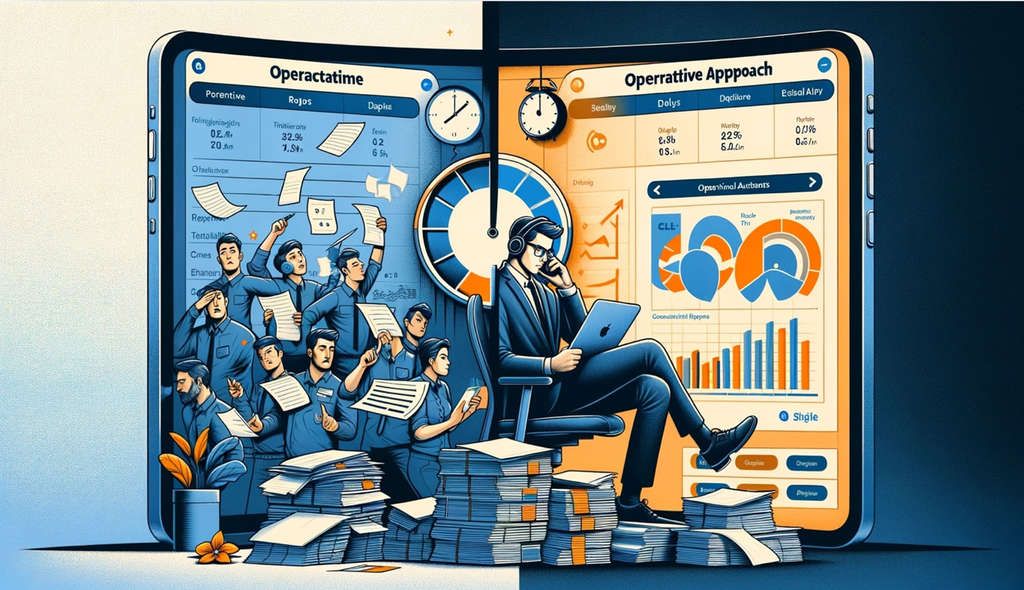Harnessing Apple Vision Pro and Spatial Computing for Transformative Efficiency in the Hospitality Industry
In the intricate dance of numbers that define the budgeting and forecasting process within the hospitality sector, the introduction of Apple's Vision Pro and spatial computing could be the leap forward needed to bridge the persistent gap between corporate strategy and operational execution. This gap, often navigated by the finance team, has traditionally been a source of inefficiency and frustration, exacerbated by the reliance on numerous software intermediaries that create silos within organizations.
The image illustrates the current process – i.e., before implementing technology such as Spatial Computing and Vision PRO, as discussed in this paper.
The Current State of Affairs
Budgets and forecasts, while crucial, have long been a source of dread within the hospitality industry. The disconnect between the corporate suite and the operations on the ground is palpable, with finance teams frequently acting as the go-between. This slows down the process and introduces a margin for error and miscommunication. Using disparate software systems across departments further complicates matters, making the entire process cumbersome and far from joyful.
A Visionary Solution
Enter Apple's Vision Pro, a tool that, at first glance, might seem like a futuristic fantasy but holds the potential to revolutionize how the hospitality industry approaches its financial planning and operational management. Imagine a scenario where CEOs and operations managers can simultaneously plan budgets and forecasts by viewing all summary numbers through a connected Vision Pro interface. This could drastically reduce the time taken to make informed decisions, from days to hours, by eliminating the need for back-and-forth communication and the reliance on assumptions.
The visualization has been created for various aspects, including the transformation of processes, real-time decision-making, operational agility, and strategic corporate oversight.
Real-Time Decision Making
With the ability to see financial and business implications in real time, managers could quickly initiate corrective actions, making the budget or forecast process an interactive and real-time exercise. This would streamline the process and enhance the accuracy and relevance of financial planning. The role of finance teams could evolve from being intermediaries to focusing on controls, audits, and providing strategic business inputs.
Operational Agility
Operational teams could benefit from continuous insight into how their actions impact targets and goals, enabling them to adjust tactics on the fly rather than relying on a post-mortem analysis of what went wrong. This level of agility could be transformative, allowing for a more dynamic approach to managing the complexities of the hospitality industry.
Strategic Corporate Oversight
At the corporate level, the ability to fine-tune business strategies in real-time could eliminate the need for numerous reviews and critiques, which often need more time to process and delay the results. This could lead to a more proactive and less reactive management style, with strategic decisions based on current data rather than historical analyses.
The Path Forward
For Vision Pro to truly deliver on its promise, some prerequisites must be met, including the compatibility of all business software with the device and the availability of 100% audio and video capability. If these conditions can be satisfied, Vision Pro has the potential to be a game-changer for the hospitality industry, offering a level of efficiency and insight previously deemed unattainable.
In conclusion, while the full capabilities of Apple's Vision Pro and spatial computing are still being explored, their potential application within the hospitality industry offers a tantalizing glimpse into a future where strategic planning and operational execution are seamlessly integrated. By embracing this technology, the industry could witness a significant leap towards eliminating inefficiencies and fostering a more agile, informed, and proactive management culture.
The image illustrates a group of professionals utilizing spatial computing technology and headsets, like the Apple Vision Pro, to analyze and integrate data from disparate and siloed sources. This visual captures the collaborative and innovative approach to data analysis in a futuristic workspace, highlighting the potential of advanced technology to streamline complex processes and enhance decision-making capabilities.
©Terence Ronson and Sunil Ithikatt [with a bit of help from various AI systems].





